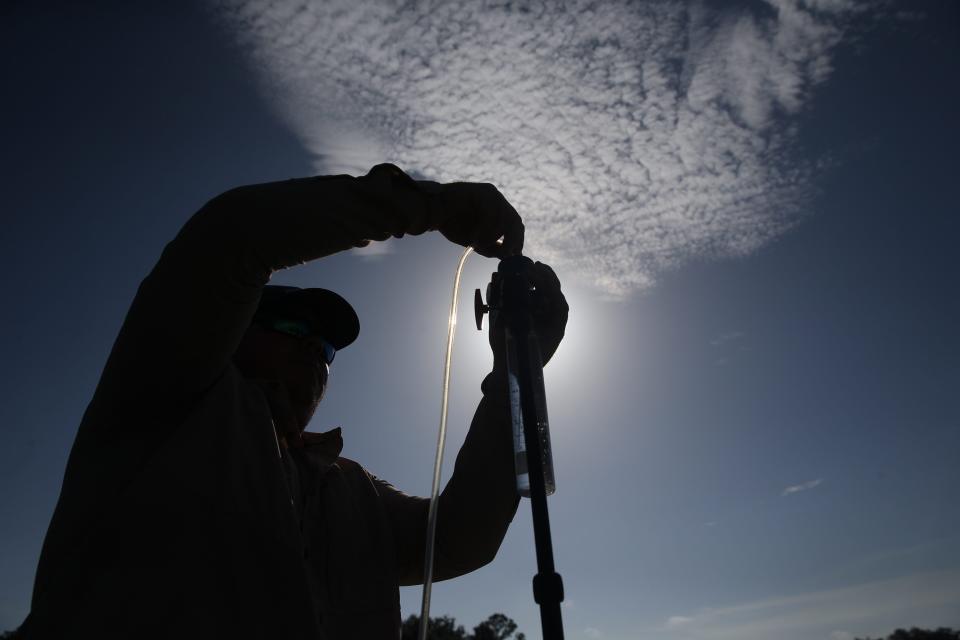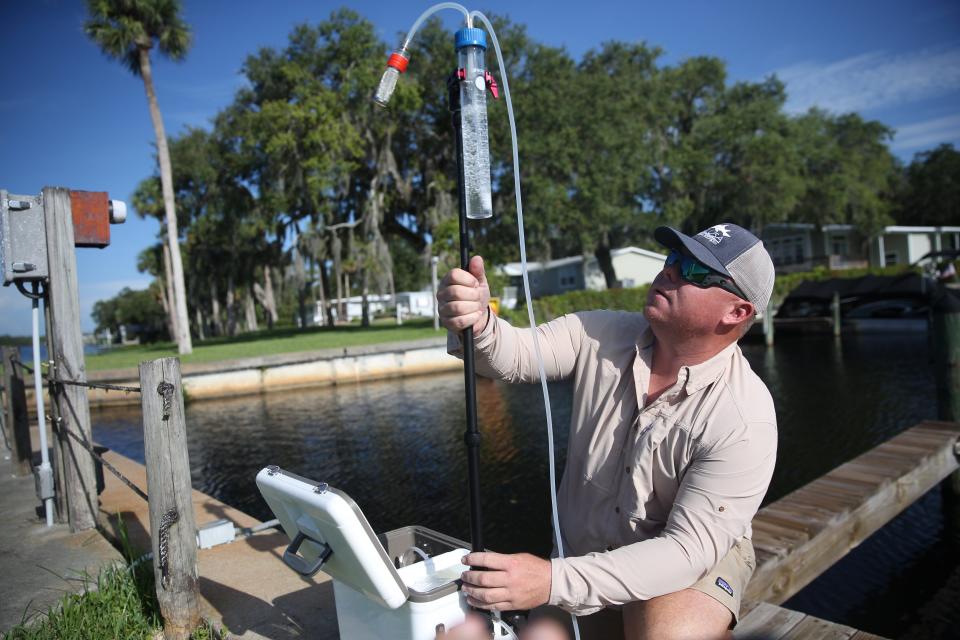Toxic blue-green algae bloom spreads to Cape Coral; testing equipment being placed
A toxic blue-green algae bloom that's been drifting around downtown Fort Myers has now spread to other areas, including the Cape Coral Yacht Club.
"We do have an (air testing) unit near the river and the yacht club, and we are aware of blue-green algae presence there and we're testing nearby," said Calusa Waterkeeper Codty Pierce on Wednesday. "July and August are prime months because water temperatures seem to be higher than normal. And today the heat index is 108. So you're close to the incubation temperature we use to grow cultures. The conditions are perfect for a super bloom."

The Florida Department of Environmental Protection's latest blue-green algae reports show concentrations in the Caloosahatchee River being near West First Street and Altamont Avenue.
Blue-green algae blooms during the spring and summer have become so frequent that folks like Pierce and some water quality scientists refer to it as a season.
"During peak bloom season we're selecting sites we know are in distress and we are implementing the units, at least two every month," he said. "But it is very expensive for the test kits and the … time."
A strong blue-green algae bloom swamped the Fort Myers-Cape Coral region during the summer of 2018.
More: Bald eagles in Florida bounce back after Hurricane Ian destroyed 148 nests
Some people there sold their homes or even stayed at hotels in order to get away from the airborne toxins and the stench of rotting algae and dead fish.
Pierce and volunteers are putting out air-sampling stations at various locations to test for airborne toxins, which come from the blue-green algae.
"It's a water trap, and it draws atmospheric air through a paper filter and into the trap," Pierce explained. "We're trying to identify what is in the air and also look for cyanotoxins that may be present. This is a still a ground-breaking type procedure, and we're building up our data sets and trying to target seasonality."

Bloom could get worse before it improves
John Wilander of North Fort Myers said he's seen thick blue-green algae near his home in North Fort Myers.
"I got some pictures of a crazy algae bloom near my house earlier today," Wilander wrote to a News-Press reporter. "It literally looks and smells like toxic sludge."
Wilander's photos show what looks like John Deere-green paint on top of the water's surface.
More: Burmese pythons in Florida actually a mixture of multiple species: USGS
Pierce said he fears the summer algae blooms will only get worse over the next few weeks.
"We seem to be in prime growing conditions with exceptional growing conditions," Pierce said. "And I don't think these conditions are natural."
Connect with this reporter: Chad Gillis on Facebook.
This article originally appeared on Fort Myers News-Press: DEP: Toxic blue-green algae still being found in Fort Myers

